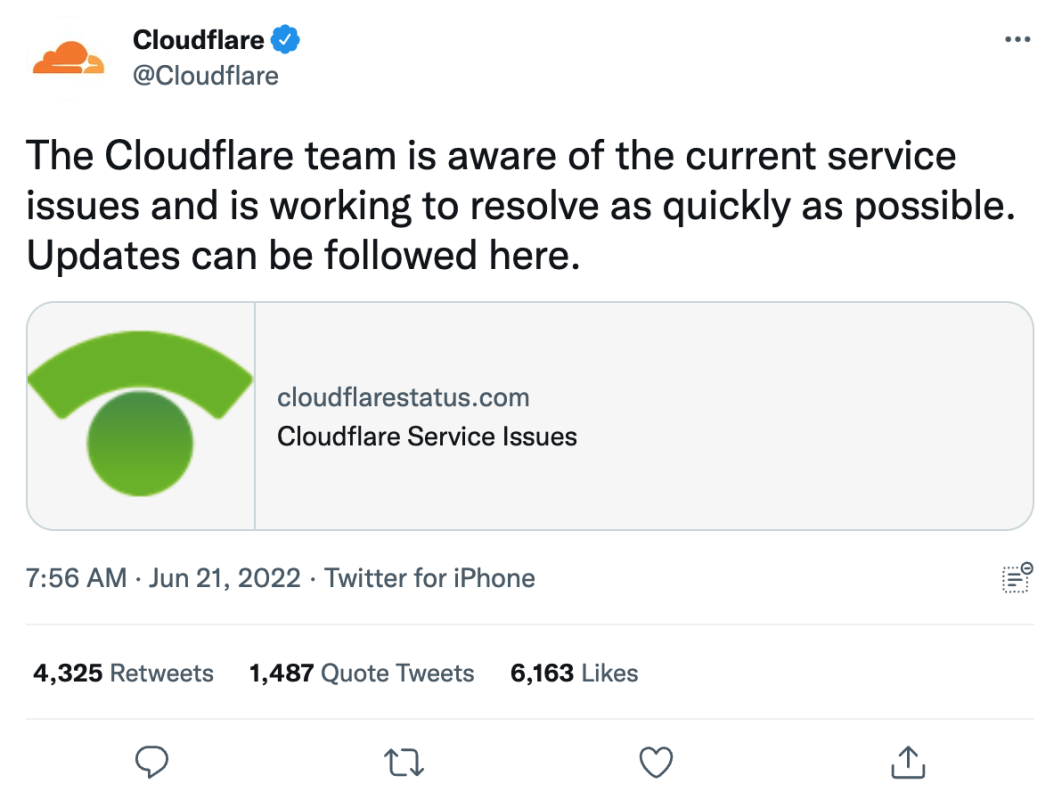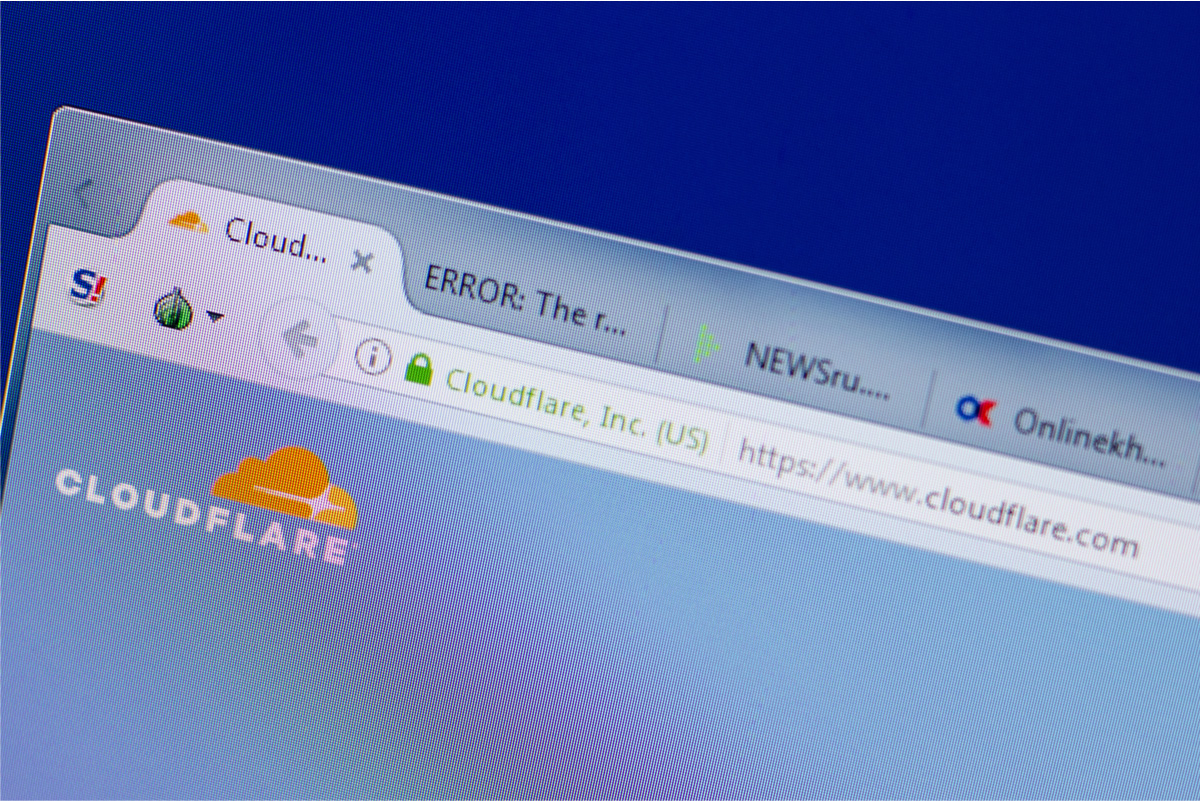An interesting day for the casual observer yesterday as globally popular internet services were down yesterday due to a Cloudflare outage.
On Wednesday 21st June at 06:27 UTC an issue with Cloudflare’s servers had arisen, around seven minutes later this issue was reported – it was a big one! An outage in 19 of their datacentres led to some of the most popular internet services going down for a period of time.
It took Cloudflare just 34 minutes to bring the first datacentre back online, the last one was back up and running by 07:42 UTC meaning that from the issue beginning to being fixed was just one hour and fifteen minutes.
Many popular sites and internet services such as Google Service, JustEat and various gaming platforms went down. Despite Cloudflare’s quick response, the internet (at least the part that was working) were quicker to respond; putting forth theories to the outage such as an EMP strike, solar flares and…gremlins?!
Ironically, the issue was caused by an unforseen side-effect with a project they have been working on to increase resilience in their service, a few hours later they released a statement detailing the server outages.
The fix was incredibly simple – a rollback. Best web development practice when making any significant changes to anything is to save the current working version before enacting any changes. This means that if anything untoward happens, the changes can simply be rolled back. Admittedly, no changes we’ve made to clients’ websites have brought down half of the internet, but the practice remains the same.
What this outage does highlight is how fragile the internet can be. One mistake at one company brought down – for a period of time – large swathes of the internet.

Who Are Cloudflare?
In short, Cloudflare own and operate a number of servers that work to both speed up and protect websites from malicious external attacks – they are used by some of the largest internet services in the world. This is loosely recognised as a content delivery network (CDN).
The concept began in 2004 as the founders, Lee Holloway and Matthew Prince started off with a simple mission, to discover where spam emails came from, and how email addresses were harvested.




